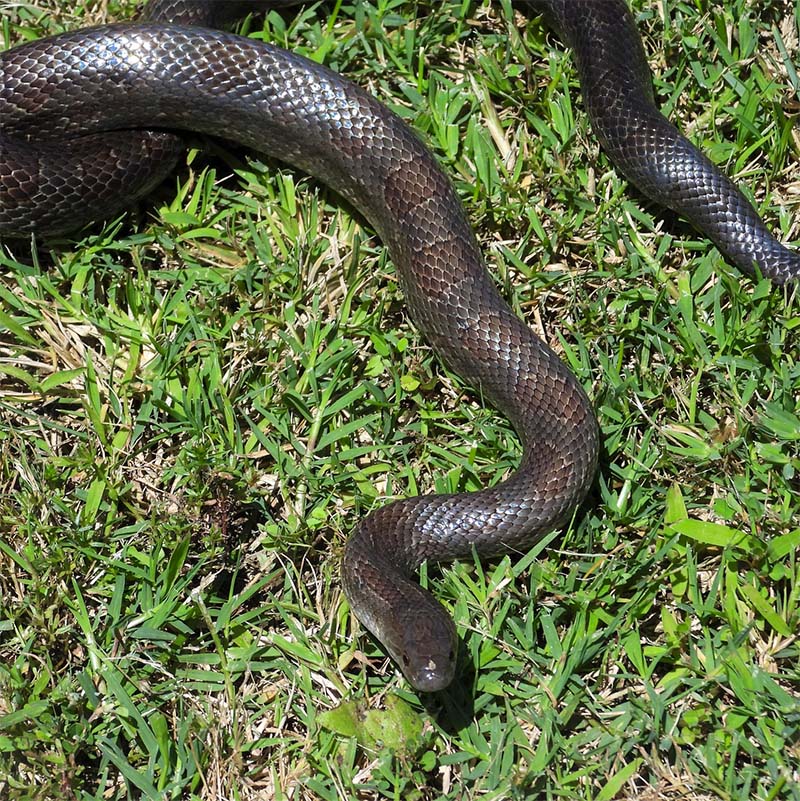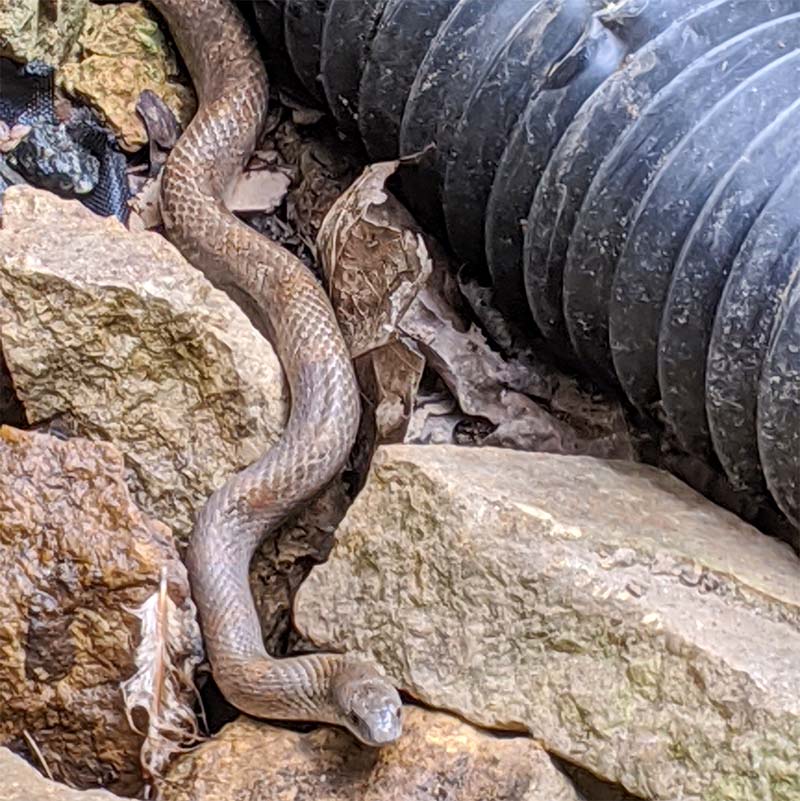
- Scientific Name
- Lampropeltis rhombomaculata
- Range
- East of Appalachians
- Also Known As
- Conant, Brown Kingsnake
- Venomous
- No
- Features
- Tan or Dark Brown Body With Brown or Tan Blotches
- Prey
- Small Mammals, Lizards, Birds
- Litter Size
- 10 - 12 Eggs per Birth
- Life Span
- ~20 Years
- Length
- 30 - 40 Inches
Quick Links for Northern Mole Kingsnake
Northern Mole Kingsnake Description
Northern Mole Kingsnake Appearance
This snake tends to be a light brown or gray color with dark brown, orange, or reddish blotches along it’s body.
It is important to note that juveniles tend to be more colorful, with more vivid markings.
Size
This snake is usually between 30 to 40 inches long, however, the record length for this snake is about 56.25 inches. The record found in Virginia is 46.8 inches.
Juveniles tend to be 8 to 9 inches long.
Northern Mole Kingsnake Behavior
These snakes are not aggressive and prefers to run away or hide from humans. However, they do bite, but all bites from this snake is from people who intentionally bother it.
These snakes are rarely seen in the wild as these snakes are diggers and hiders and only come out at night. When they are found they usually are seen under boards or other debris near the forest edge.
It is illegal in Virginia to keep Wild Snakes as pets
Range and Habitat of The Northern Mole Kingsnake
Range
They can be found between the mountains and the coast, although some have been spotted in the Gloucester area and Northeast Virginia. These snakes can be found all throughout the south reaching to Mississippi, and as far north as Maryland.
Habitat
Kingsnakes prefer the same habitat as other Colubrids such as the milk snake and Copperhead. These snakes prefer forests and fields, or in other words areas with a lot of cover. These snakes are diggers, and are rarely seen in the suburbs, however they can be seen in the forests’ edge.
Diet of Northern Mole Kingsnake
They feed on lizards, snakes, birds, and small mammals. These snakes are constrictors and will squeeze their prey to kill.
Reproduction and Young
Reproduction
Mating season for these snakes is between May and June,


